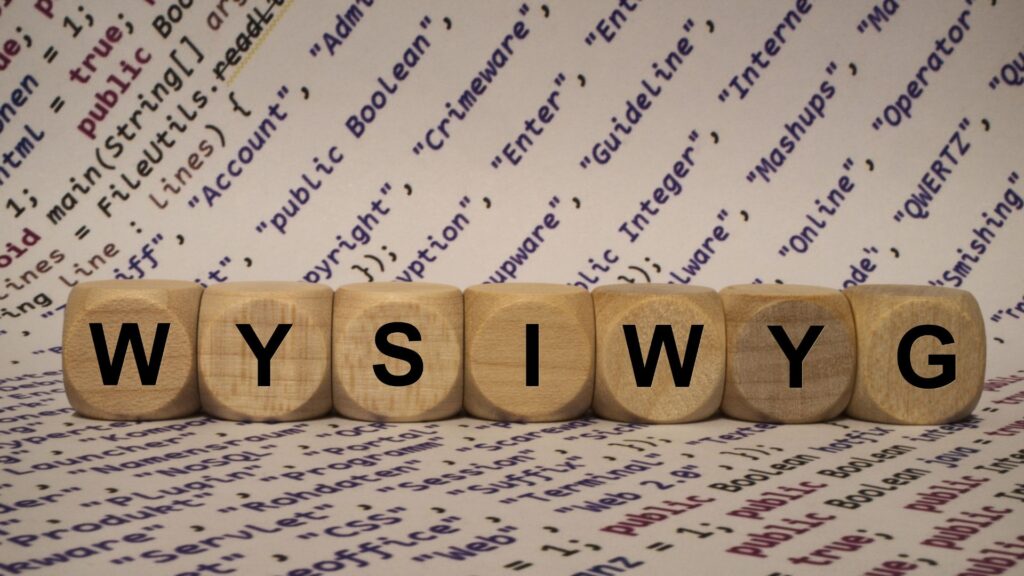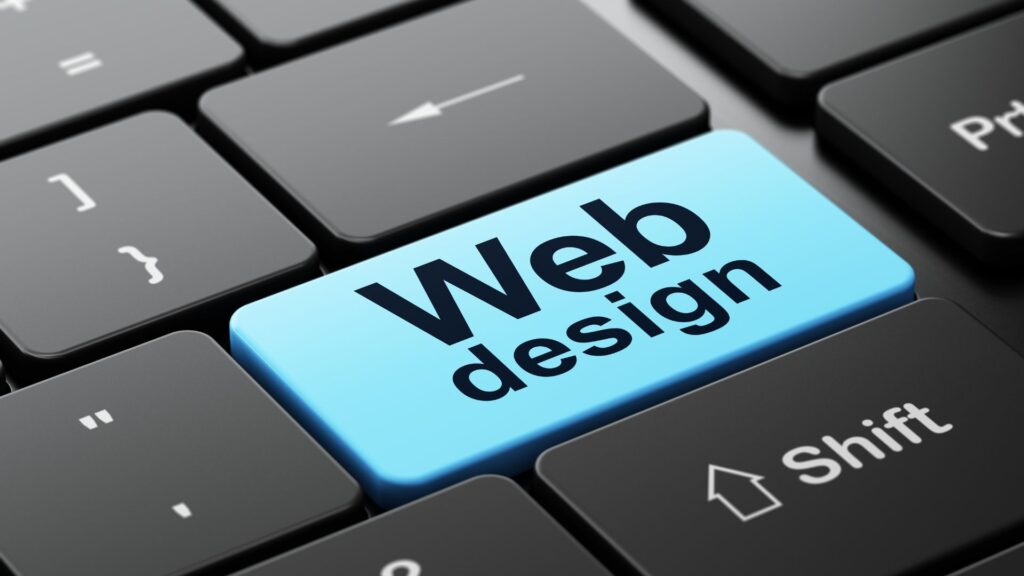In the rapidly evolving digital world, WYSIWYG editors have simplified the process of creating and editing online content. WYSIWYG, short for “What You See Is What You Get”, allows you to view the end result of your document or webpage during the creation process.
This article delves into the concept of WYSIWYG editors, their advantages, various types, and how to choose the one best suited for your needs. It serves as a comprehensive guide to understanding WYSIWYG and the benefits it brings to the table.
Whether you’re a blogger, a corporate website manager, or an e-commerce store owner, learning about WYSIWYG editors can enhance your digital content creation experience.
WYSIWYG: definition
WYSIWYG is an acronym that stands for “What You See Is What You Get”. The term is used in computing to describe a system where content displayed during editing appears very similar to the final output, which can be a printed document, web page, or slide presentation.
A WYSIWYG editor or program allows you to format text and graphics on screen, and the layout on the screen closely matches the printed layout or the way it would look on a web page.
This is unlike more traditional text editors, where you would type text along with markup for formatting (like HTML), but wouldn’t be able to see the final layout until it was rendered or printed.
This approach is user-friendly, especially for people without programming or coding skills. It’s commonly found in word processors like Microsoft Word, as well as in web development software and certain email platforms.
With WYSIWYG, users don’t need to learn different markup languages or coding skills to format text or design a webpage, making content creation and editing more accessible to a wider range of people.

Why Use a WYSIWYG?
- User-Friendly: WYSIWYG editors are generally easy to use, even for individuals with limited technical skills. This is because they provide a user interface that resembles word processors, making them more intuitive and less intimidating than raw code editors.
- Real-Time Preview: These editors allow you to see exactly how your content or webpage will appear as you’re creating it. It eliminates the need to constantly switch between code and preview modes, making the design process more efficient.
- No Coding Knowledge Required: With a WYSIWYG editor, you can format text, add images, and even design entire web pages without knowing how to code. This opens up web design and content creation to a wider audience.
- Time-Saving: Since you don’t have to write code manually, you can create and edit content more quickly. It can be a significant time-saver, particularly for larger projects.
- Customization: Many WYSIWYG editors offer customization options, allowing you to modify the look and functionality of your content or website to suit your needs.
- Consistency: WYSIWYG editors often come with templates or styles that ensure consistency across your content or website. This is particularly useful for businesses or brands that need to maintain a consistent visual identity.
- Accessibility: Because they don’t require users to write code, WYSIWYG editors make content creation and web design more accessible to people with disabilities.
Different types of WYSIWYG Editor

- Web-based WYSIWYG editors: These editors, often known as ‘online rich-text editors’, are used in web content management systems, where users can write and format their content directly in their browser, seeing the result in real-time.
Examples include TinyMCE and CKEditor.
- Desktop WYSIWYG editors: These are standalone applications installed on your computer. They’re often more robust and provide more functionality than web-based counterparts. Adobe Dreamweaver and Microsoft Expression Web are examples of this type.
- WYSIWYG Website Builders: These tools allow you to build entire websites using a WYSIWYG interface. They often include drag-and-drop functionality and pre-made templates for ease of use. Wix, Weebly, and Squarespace are well-known website builders.
- WYSIWYG Blog Editors: These are tailored specifically for bloggers, allowing easy creation and editing of blog posts. Some blogging platforms like WordPress have built-in WYSIWYG editors for creating posts.
- WYSIWYG Email Editors: These are used in email marketing platforms to create email templates and campaigns. The emails can be designed and previewed in the editor before sending. MailChimp is one example of a platform with a built-in WYSIWYG email editor.
- WYSIWYG Editors for Mobile Apps: These editors are used in mobile app development to design and arrange user interface elements. They allow developers to see what the app will look like as they build it.
- Open Source WYSIWYG editors: These are free to use and modify, making them highly customizable. They are popular among developers and organizations that require a high degree of flexibility or have specialized needs. Examples include TinyMCE and CKEditor.
How to choose the right one?
Choosing the right WYSIWYG editor for your needs can be a bit overwhelming given the numerous options available. Here are a few steps to guide you in making the right choice:
- Define your Needs: You have to understand your specific needs. Are you building a blog, a corporate website, or an e-commerce site? The type of editor suitable for one may not work well for the other.
- User Interface (UI): Consider an editor that is user-friendly and intuitive. The whole point of using a WYSIWYG editor is to make the process of creating web content easier, so a complicated user interface would defeat this purpose.
- Functionality: Look for an editor that offers the features you need. This could include text formatting, image uploading, creating hyperlinks, and adding multimedia content like videos. Some editors even offer more advanced features like code editing for more experienced users.
- Compatibility: The editor should be compatible with different operating systems, browsers, and devices. It should also integrate well with your existing systems or platforms, like your Content Management System (CMS).
- Responsiveness: Ensure that the content created with the editor is responsive, meaning it adjusts well to different screen sizes and devices. This is critical given the increasing use of mobile devices for web browsing.
- Customizability: The ability to customize the editor’s appearance and functions can be important, particularly for more complex websites. Some WYSIWYG editors offer customization options, including the ability to add or remove buttons from the toolbar.
- Support and Updates: Check if the editor is regularly updated and if the developers offer good support. This is particularly important if you are considering an open-source editor. Frequent updates indicate that the tool is actively maintained, and good support ensures you can get help when you need it.
- Pricing: Some editors are free, while others require a subscription. Consider your budget, but also take into account the features offered, support, and the specific needs of your project.
Remember, there is no one-size-fits-all editor. The best WYSIWYG editor for you will depend on your unique needs and circumstances.
Conclusion
To conclude, WYSIWYG editors have revolutionized the way we create and edit digital content. By providing a user-friendly interface and a real-time preview of the final output, they make web design and content creation more accessible and efficient.
Whether you’re building a simple blog or a complex corporate website, choosing the right WYSIWYG editor according to your specific needs and preferences is a crucial step towards successful digital content creation.
Now that you have optimized your WYSIWYG, learn how to generate leads for your website through this article.
Need more advice to build the right WYSIWYG? Contact our experts to guide you through the process.
